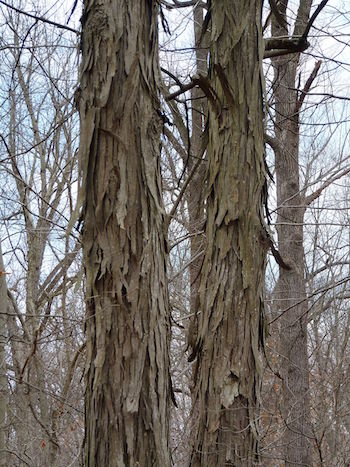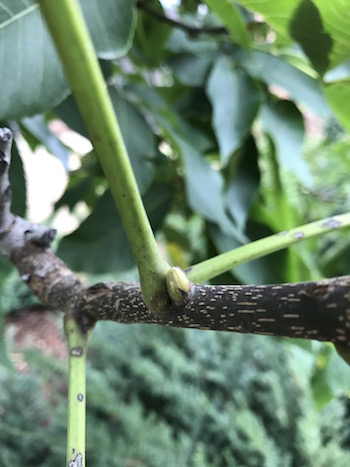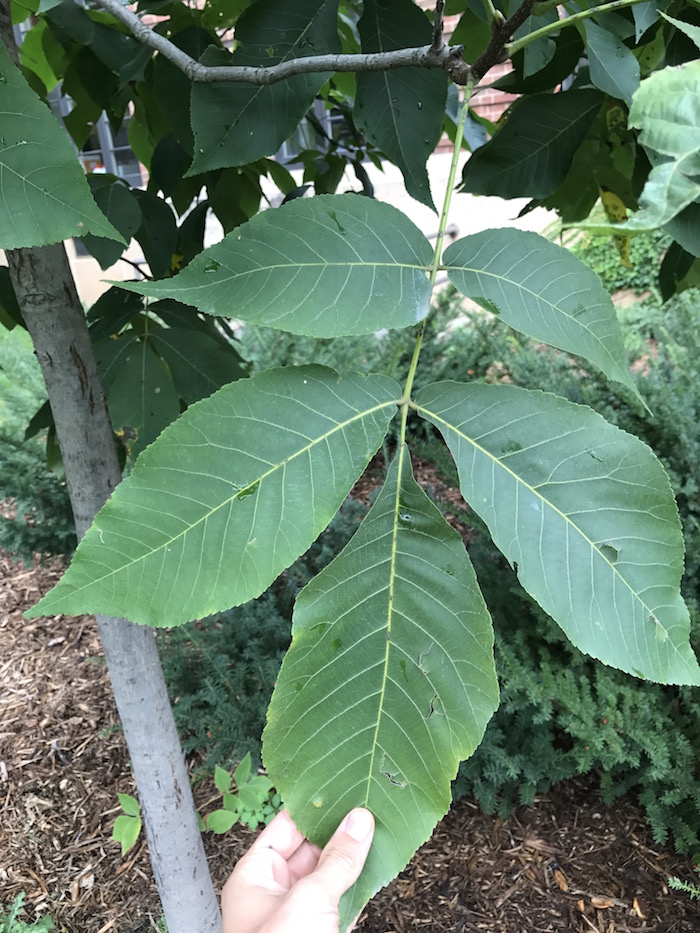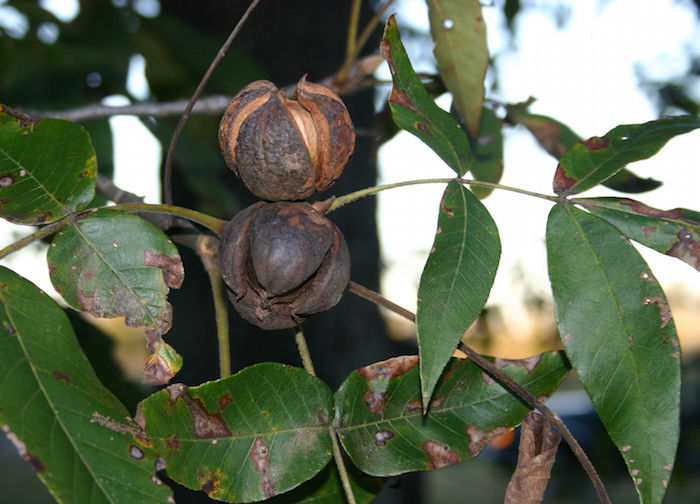
Description:
Shagbark hickory is a large, native tree known for its edible nuts and unusual bark. Leaves are compound, with 5-9 finely-toothed, broad, pointed leaflets, 3-7” long. They are smooth, and yellowish-green. Male flowers are pendulous catkins and female flowers are short spikes. Female flowers develop into edible, oval nuts. The bark is smooth when the trees are young, but exfoliates in long strips as the tree ages, giving it a “shaggy” look.
Shagback hickory nuts are very tasty, but they are not well-suited for commercial production because the trees take a long time to grow and fruit unreliably. The wood is among the hardest in the world, and is used for athletic equipment and ladder rungs. The wood is also popular is charcoal grilling, as it gives food a hickory-smoked flavor.
Issues:
Hickory bark beetle and pecan weevils can be a problem in some parts of its range, and anthracnose and leaf spot are relatively common fungal diseases.
Other Resources:
Photo Credit: Public Domain CC by SA 2.5





